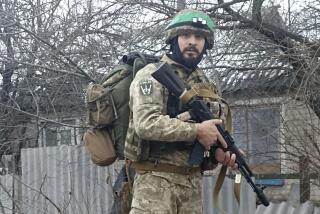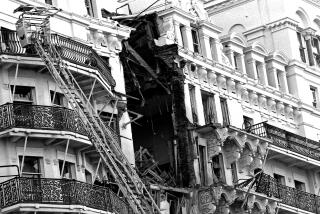The Globalization of Terror
- Share via
Last week, just after the Irish Republican Army announced it would put its arsenals beyond use (a plan it later renounced), three of its operatives were detained at Bogota’s international airport. The trio of IRA commandos was returning home after five weeks in southern Colombia, where guerrillas operate freely. Tests on the clothing of the Irish nationals turned up traces of four types of explosives as well as cocaine and amphetamines.
By Thursday, neither the IRA nor its political wing, Sinn Fein, had stepped forward to explain what its members--among them two top IRA commanders, James Monaghan and Martin McCauley--were doing in the Colombian jungles.
Were they teaching the Revolutionary Armed Forces of Colombia, or FARC, how to manufacture bombs to be detonated in Colombian cities? Or were the IRA operatives learning from FARC experts how to build bombs in gas cylinders that can be fired like missiles, a favorite weapon of the Colombian guerrillas, who use them to bombard the homes of people they consider hostile to their cause?
Of course, there’s always the possibility that the Irish terrorists were learning from Manuel Marulanda, a FARC commander known by the nickname “Sureshot,” how to market cocaine and methamphetamines. Or maybe they got together with Henry Castellanos, FARC’s kidnapper in chief, about how to abduct civilians for profit. U.S. authorities estimate that FARC makes between $300 million and $500 million a year from drug trafficking and kidnapping.
It is possible, if unlikely, that the IRA chiefs were moonlighting for purely personal profit. If so, the IRA must disavow them and cut them loose. Gerry Adams, the political leader of Sinn Fein, has tried mightily to give the IRA a more respectable image. But this Colombian adventure, with its aura of the globalization of terror, gives the lie to the IRA’s long-held stance against illegal drugs and its oft-stated commitment to peace and democracy.
More to Read
Sign up for Essential California
The most important California stories and recommendations in your inbox every morning.
You may occasionally receive promotional content from the Los Angeles Times.













